Editor’s Note: This feature is part of CNN Style’s new series Hyphenated, which explores the complex issue of identity among minorities in the United States.
Raelis Vasquez, a New York and New Jersey-based artist, works from a bank of his memories and emotions to create tender and sincere paintings of Afro Dominican life. Usually featuring his kin and friends, the large-scale oil and acrylic works are cast in warm and welcoming colors. In one painting, a brown-skinned girl in a tubi, a tubular hairstyle crafted by Dominican women to preserve our salon blow-outs, eats her breakfast. In other works, a Black woman bottle-feeds her baby while sitting in a bright blue rocker, and a young Black couple await their destiny as they document their nuptials on their wedding day.
Touching on race, class and immigration, Vasquez taps into his first-hand experiences and that of his subjects. The genesis of Vasquez’s pieces start with photographs, which he takes himself of family members in the US or back in the Dominican Republic, staging relaxed scenes with them that turn into more profound moments on the canvas.
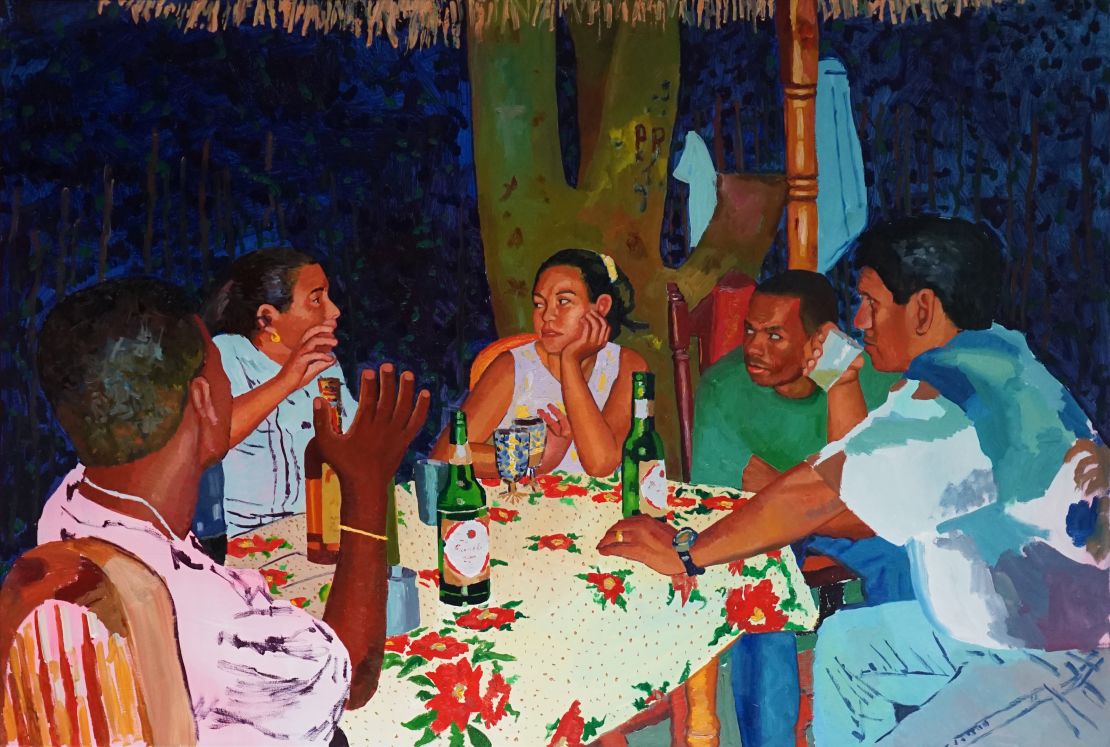
Two of his works are currently showcased at New York City’s El Museo del Barrio for “Estamos Bien – La Trienal 20/21” – the museum’s first and major survey of Latinx contemporary art, guest-curated by esteemed Dominican American artist Elia Alba. Vasquez is the youngest artist in the show, and his paintings show the joy of lively gatherings in the campo (meaning rural areas or the countryside in Spanish-speaking countries and within the Latinx diaspora). “Noches en el Pueblo de Dios,” from 2020 (“Nights in Pueblo de Dios”), pays tribute to the small town he grew up in in the Dominican Republic, in the northwestern city of Mao, known for its many rivers and vivid red sunsets. In the painting, folks of various skin tones gather for conversations and cervezas.
Over the phone, Vasquez speaks thoughtfully about a recent trip back to the island, his second visit so far in 2021. He recounts spending time with his brother and extended family in Mao and road tripping across the country, to coastal cities Santo Domingo and Puerto Plata as well as Santiago.
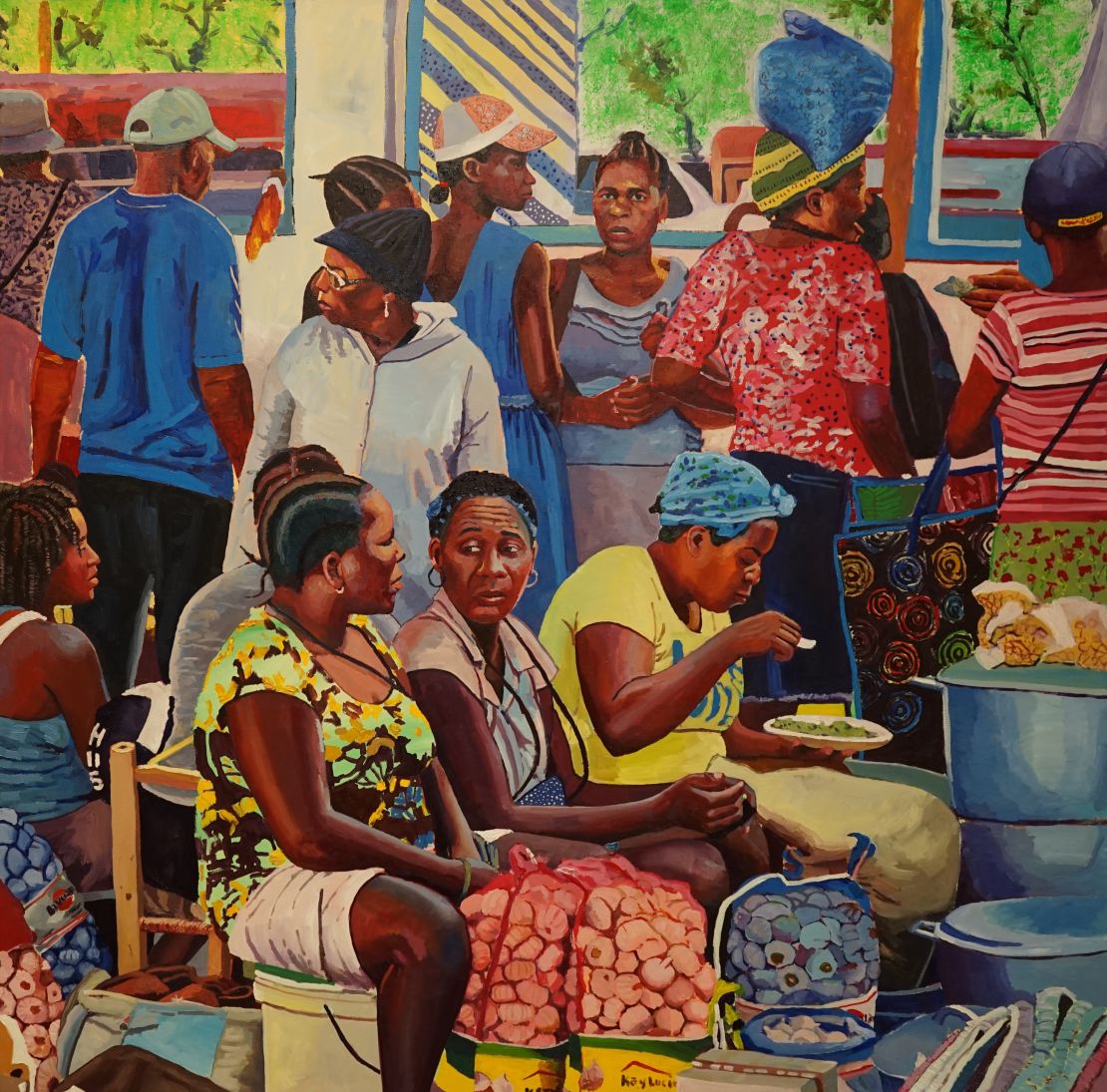
“The Dominican Republic has so much beauty and so many beautiful things to go and see and explore,” he said. “One of the main things, (especially) me being an artist, is being in the capital in Santo Domingo.”
For Vasquez, who immigrated with his family to New Jersey at seven years old in 2002, coming home, reconnecting with family and being nourished by Dominican culture is the creative sustenance that feeds his compelling and intimate paintings. His most recent trip, he said, will be where he draws inspiration for his next works.
“I’m always working, always capturing, I’m always writing, and I’m doing sketches, reading,” he said of his time there. “I take time away from the day-to-day studio work and do that other kind of work while I’m out there.”
A wider range of representation
Though there’s finally an increased focus on contemporary Latinx art (separate from Latin American art), the struggle continues to ensure Black, Indigenous and Asian representation within Latine communities.
In recent years exhibits like “Our America: The Latino Presence in American Art,” and the wide-reaching “Pacific Standard Time: LA/LA”, which highlighted a plethora of Latinx dialogues in art (and featured varied Latin American ones as well), have served as very broad, yet valid, building blocks shaping US Latinx art. More specific shows like “Pacha, Llaqta, Wasichay: Indigenous Space, Modern Architecture, New Art,” which investigated Latinx artists and their relationship to Indigenous architectural and spatial frameworks in the Americas, and “Afro Syncretic,” which showcased Blackness within the Latinx diaspora, examining its ties to ideas including beauty standards, music, food and religion.
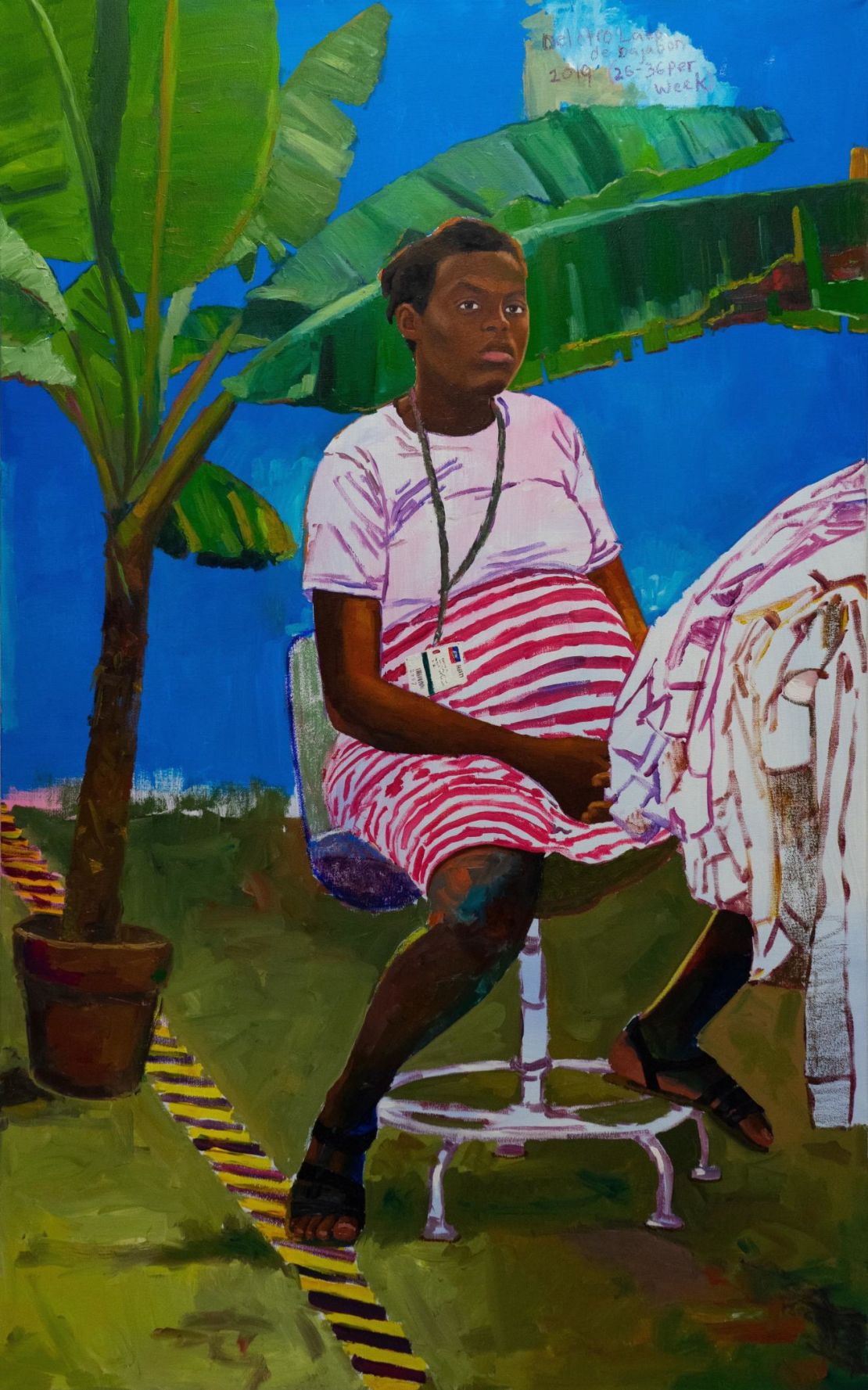
Vasquez and other rising Black Latine contemporary artists such as Yelaine Rodriguez (who curated “Afro Syncretic”) and Joiri Minaya, continue building deeply nuanced Black Latinx narratives that artists like Fabiola Jean-Louis and Firelei Báez have crafted for more than a decade. These artists disrupt limited and monolithic ideas on Latinx identity (which racially centers white Latinx and mestizxs as the default), and explore the multi-dimensionality of Blackness. Vasquez does so simply by spotlighting his Black Dominican loved ones in everyday scenes made monumental in scale with genuine relatability.
“I would say that by the sheer representation of the culture that I come from, I give this identity of Latinx a wider range of perceptions,” he said. “In the US people usually think of Latinx folks, or people from Latin America, in one way.” But, as Vasquez points out, the range of skin tones within his own family challenges that idea. “The way that my family looks, side-by-side, you would think you’re talking about the whole Latin America just like, phenotypically,” he said. “I think it’s important to have more voices from these wide categories, so that we can really see the nuances and really appreciate the differences and similarities, because we all have our similarities as well.”
Growing as an artist
For Vasquez, art has long given him a sense of freedom and refuge in processing and praising his Afro Dominican identity. He turned to drawing as a child while he was adjusting culturally in the US, and by high school, his talent had blossomed.
“I think it was a consequence of the immigration process,” he said. “It was drawing, that thing that I could control in this environment (where) I felt really out of place, and in an environment I couldn’t control.”
After attending community college in New Jersey, he enrolled at School of the Art Institute of Chicago (SAIC), which, although prestigious, isn’t known for its diversity.
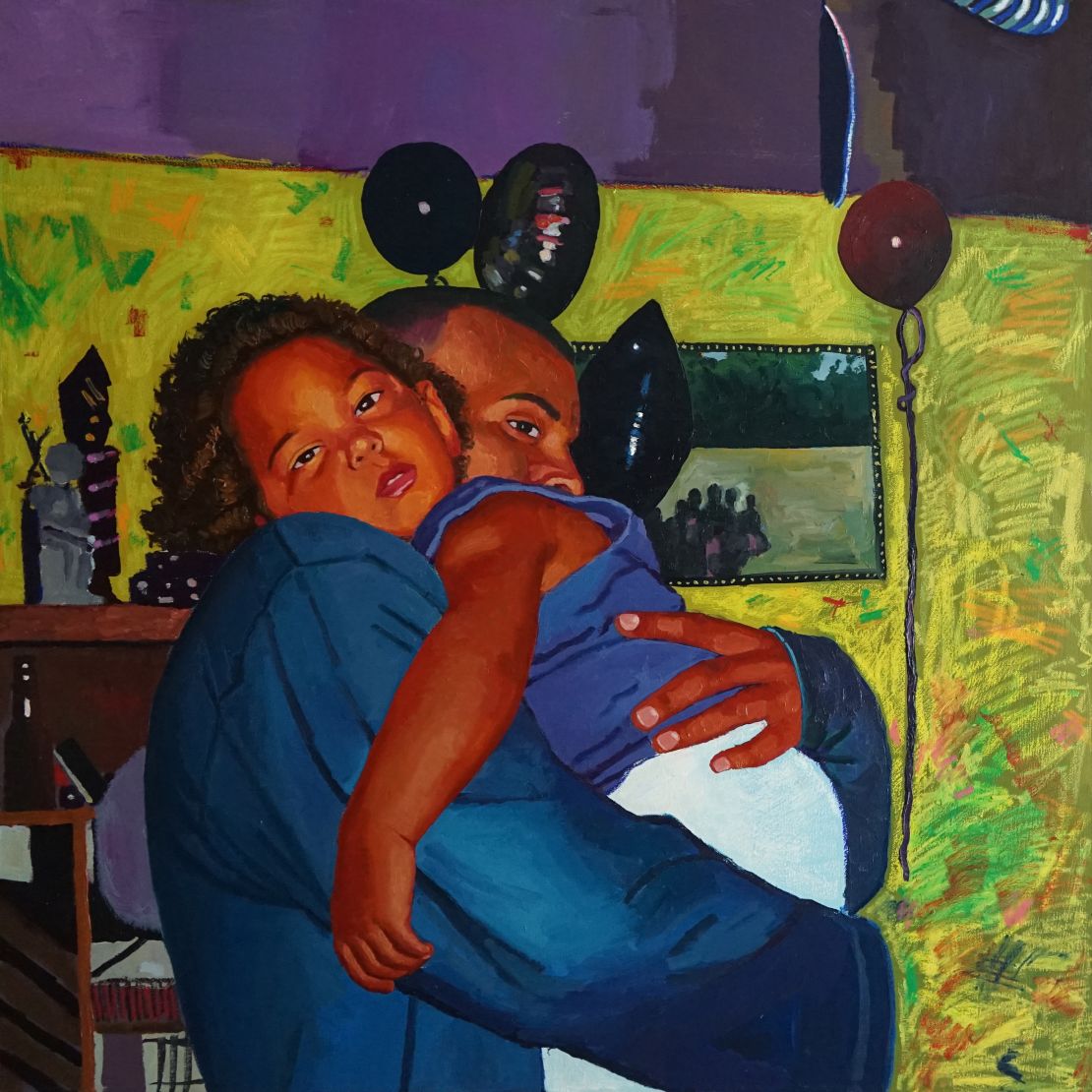
Vasquez used the time there to reflect on his sense of self, which became fundamental to his growth as an artist creating Black Latinx narratives.
“It allowed me space to think about what I’ve been through, who I am, (and) where I come from,” he said. “I think it took being out of this DR, New Jersey, East Coast, New York, very Caribbean, kind of culture, because once you’re in it, you think everything is normal, until you’re removed from it.” In Chicago, he added, “that was the first time I started thinking about the fact that we immigrated.”
Now a Columbia University MFA student, Vasquez’s career is thriving despite the uncertainty and frustration of the pandemic. Last September, Vasquez and fellow Afro Dominican American painter Tiffany Alfonseca collaborated on a two-person show, “Como Nosotros Somos,” (“How We Are”) in Los Angeles, bringing together their figurative and vibrant approaches to the multi-layered experiences of Black Latinx identities. This past spring, Vasquez was included in “Shattered Glass,” a blockbuster group show at Jeffrey Deitch in Los Angeles, featuring Black and POC artists organized by two young Black curators, the gallery’s director Melahn Frierson and AJ Girard. The show included Vasquez’s recent painting “Mercado en Dajabón,” which respectfully shows the everyday survival of Haitian immigrants in the border market town of Dajabón in the Dominican Republic.
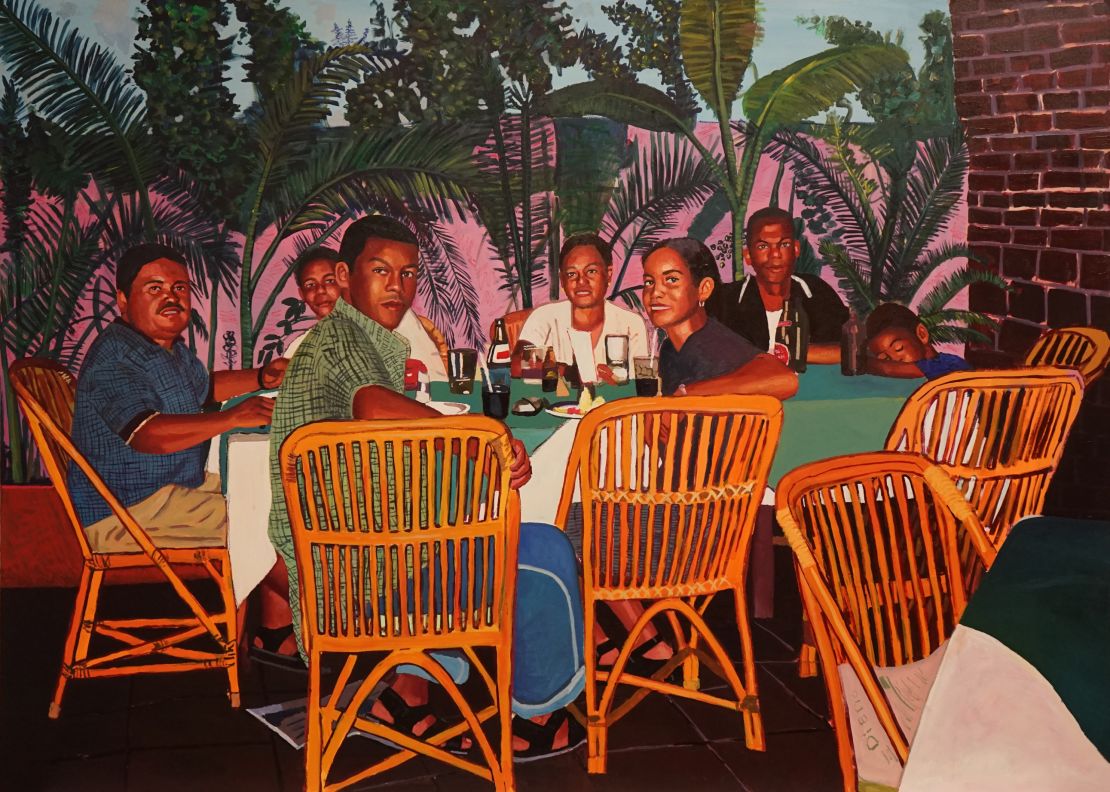
Vasquez’s recent international debut solo exhibit with De Buck Gallery in France, “Belleza Común (Beauté Commune),” showcased six new works produced in late 2020, combining oil, acrylic, oil stick and sand. The portraits are reverential, pensive and vulnerable. In “Picnic Day,” a family of four enjoy rest, leisure, food and sunshine, while in “El Sastre,” a tailor takes a contemplative interlude. Symbolically, these subjects represent the Dominican folks who come to Washington Heights and the Bronx in New York; Paterson, New Jersey; Boston, Massachusetts; and Providence, Rhode Island; making these cities run like clockwork, while breaking their backs and laying down new roots.
Next month, Vasquez has a second international solo show in Frankfurt with Sakhile & Me, titled “As We Were”, and this time he is sourcing old family photos as the basis for the works.
“With this (upcoming Frankfurt exhibit), I had to remove that control because I’m looking at old family photos that were not taken by me,” he explained. “I’m selecting (the images) and still doing my process, inserting myself in a way to revitalize the moment, but I see it as a difference.”
Top image: “Buen Provecho” (2020) 40” x 60” oil, acrylic, and oil stick on canvas.



